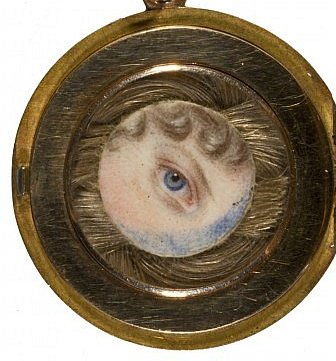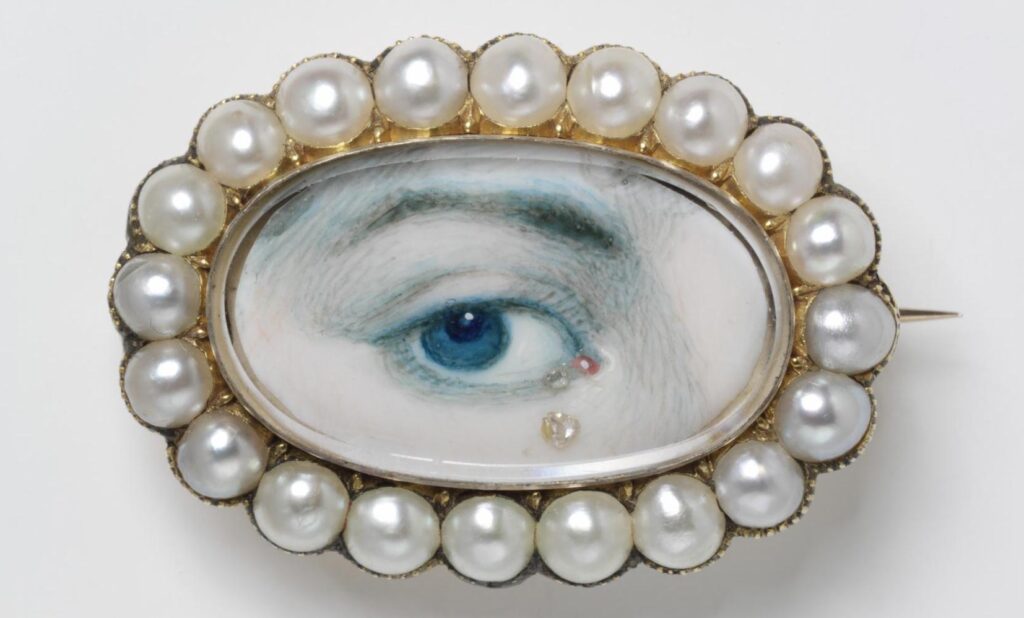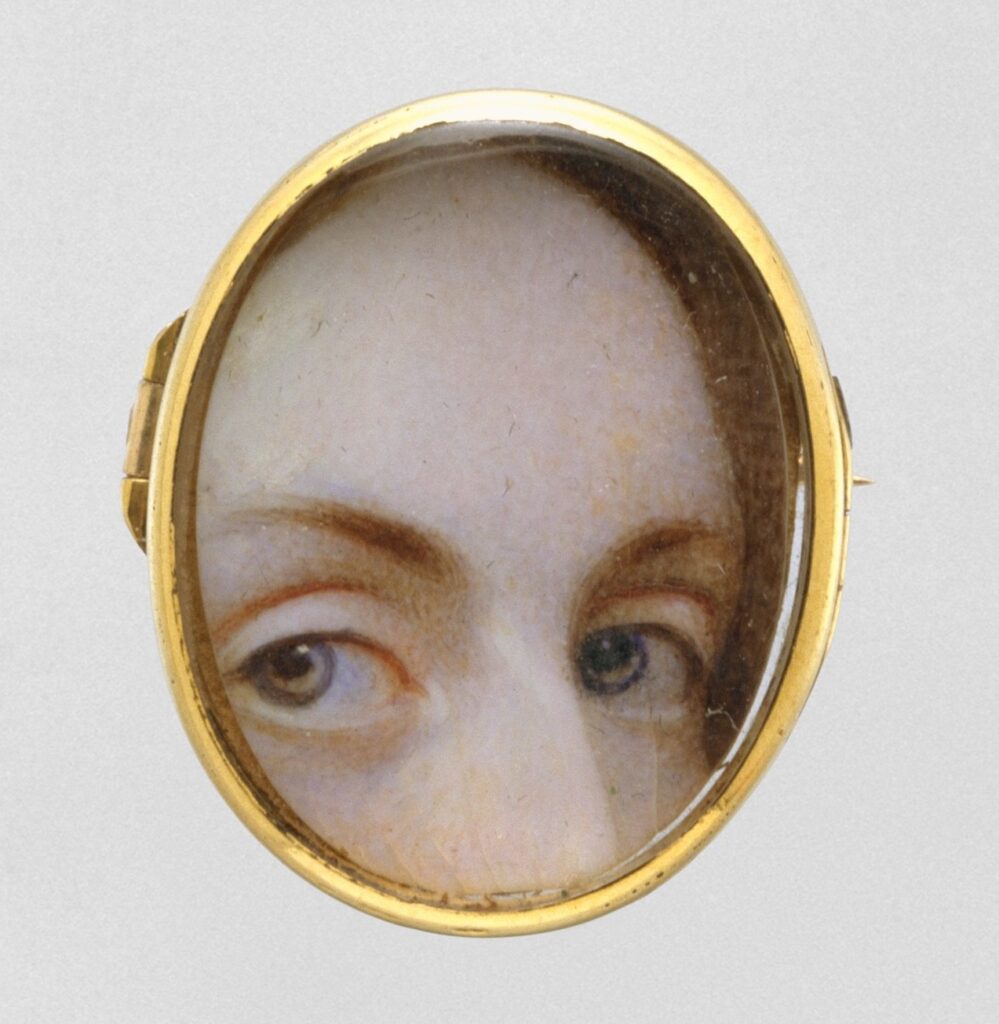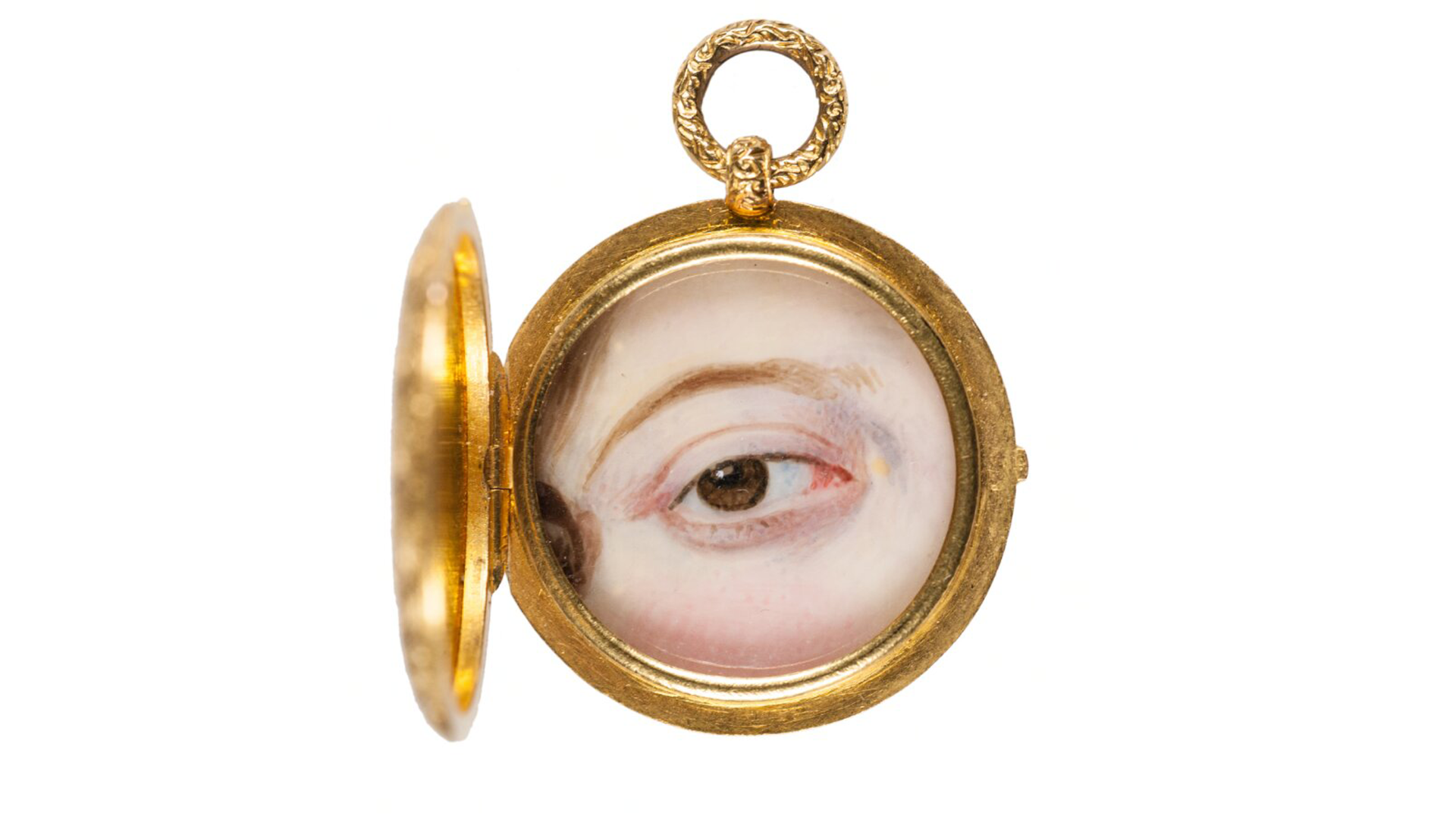There’s something about gazing into the eyes of your beloved that bonds you closer together and creates an intimacy, a special connection between the two of you. That gaze brings up feelings of love and longing, devotion and desire. But what happens when you and your lover are separated? Today, we can pick up a cell phone and call, but in the late 1700s and early 1800s, couples exchanged miniature eye portraits, also known as a lover’s eyes as a way of keeping a loved one close when separated. It was a very personal reminder of love.
Prince George and the Lover’s Eye

While there is historical evidence that eye miniatures were around in France, it was Prince George of Wales, later King George IV, who made them famous. The young Prince fell madly in love with Marie Anne Fitzherbert, but because she was Catholic, a commoner, six years older than him and twice widowed, there was no way that the Prince’s father, King George III, would ever consent to the marriage. Nonetheless, the Prince pursued Marie relentlessly. She turned down his first marriage proposal and left the country, which didn’t stop George IV from continuing to declare his love.
On November 3, 1785, when George was 21 and Marie was 27, he wrote a letter, sending a gift with the missive. The gift, it turned out, was an eye miniature of the Prince’s right eye, painted by famed miniaturist Richard Cosway. Marie was somehow convinced to secretly marry the Prince. The marriage remained a secret for a couple of years. In the meantime her eye was painted and placed in a locket for the Prince to wear, a reminder of her love. The couple’s marriage was never recognized and George was forced to marry another.
Eye Miniatures Were Secret Messengers

Miniature portraits, depicting the whole face or body, were quite stylish in the 1700s and were meant to be companions when lovers were parted. Allegedly the portraits were kissed and even spoken to as a way to maintain a connection. The eye miniature, often watercolors painted on ivory, was a very specific and intimate version of this style.
During the late 1700s and early 1800s when these jewels were popular, there were strict rules about communicating with people of the opposite sex. It wasn’t considered proper to just go over and start up a conversation, so people found other ways to communicate their feelings more discreetly. Set in rings, bracelets, pendants, brooches, watch fobs, snuff boxes and tooth pick holders, the eye miniature was one of those ways. Because the portrait was of an eye only, and the jewelry generally left the sitter unidentified and the portrait unsigned by the painter, the eyes were anonymous, except to the one who was wearing it.
The Gaze and its Importance
When looking at an eye miniature, it’s more than just a rendering of an eye, it is an eye that is gazing, or looking at you. That’s because during that time frame, seeing and being seen in public was important and a look or glance and especially a gaze in someone’s direction could hold much meaning. These meanings were captured in eye miniatures and the meaning could vary depending upon whose eye it was and upon who the recipient was. The gaze of an eye miniature could mean anything from love and lust to protection and a reminder to be faithful to your lover. It’s these very attributes that may have led Edith Weber a New York jewelry collector/dealer to name eye miniatures, the lover’s eye.

Illicit Liaisons

The style also caught on during this time period, because historically, it was quite common for people to be having secret liaisons and forbidden love affairs. The parties involved could wear each other’s eye and nobody else would know who it was, allowing them to show their love for each other while keeping identities under wraps. However, it was not only couples who wore eye miniatures, they were also commissioned by families. Spouses, children and other relatives had eye portraits painted to keep the family close.
Eye portraits continued to be popular into the 1850s. Queen Victoria was a fan of these jewels and she had Sir William Charles Ross, Royal Miniaturist to the Queen, paint eye portraits of children, friends and relatives. These charming jewels fell out of favor in the mid 1800s with the introduction of photography. Today, outside of museums, there are very few of these tiny treasures left intact, so if you find one it is very rare and collectible.
Top of Page: Locket with eye miniature, attributed to William Charles Ross, Nationalmuseum, Sweden, 1817, public domain, courtesy WikiCommons.
Authored by Amber Michelle
